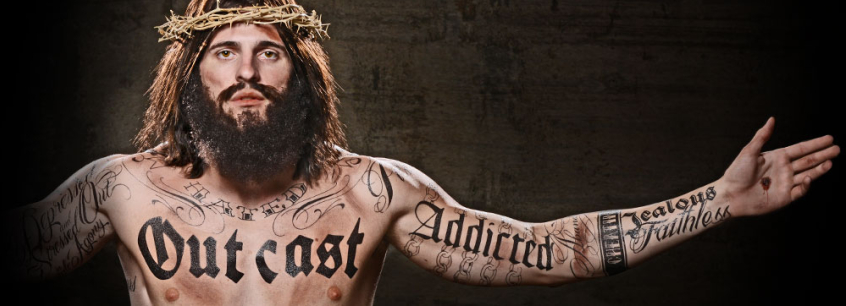
There's a bit of an obsession with "hipster" vicars in the mainstream media of late – from the Daily Mail to the Evening Standard to Vogue, I seem to come across an article celebrating this "phenomenon", oh, at least every couple of days.
It's as if journalists have suddenly collectively realised that there are some priests who are a) not 95 and b) capable of pulling together a half-decent outfit, and they're excitedly jumping up and down and pointing at these freakish anomalies, shouting: "Look! Look at the cool holy person!" It's been provoking the kind of awestruck wonder normally reserved for seeing a dog walk on its hind legs, or a kitten dressed in a miniature halloween costume.
I have several problems with this sudden spate of stories – the primary one being that these people ARE NOT HIPSTERS (hence why I've been making fast and loose with the inverted commas). That is to say, they only are if you understand the term "hipster" to mean "anyone under the age of 50 who's sporting facial hair".
My friend came across one of these articles and immediately burst out laughing. "What, him?" he asked incredulously, pointing at one of the "hipster vicars" in question. "I know that guy – he's not cool! He's just got a beard!" Herein lies the problem. The humble face rug has become such a status symbol for quirky, trendy urbanites, that anyone who happens to have one is automatically classified as such. But let me clarify: hipsters have beards. Having a beard does not make you a hipster. This is an important distinction to make.
On the other side of the coin, I'm also slightly affronted that it should be so surprising to people that in the sprawling, diverse, complicated make-up of the Church, there are people who have tattoos or collect records or wear vintage cardigans. No, actually, we don't all trudge around in socks and sandals, modelling a pair of NHS specs and waving the King James Bible about. Isn't that stereotype a little tired in 2014?
But mostly, I find it tremendously sad that these articles are trying to contort Christianity to fit into a wholly secular framework – latching onto a surface level, superficial part of someone, and presenting them and their religion based on that. "I mean, obviously it's a totally whack job set of beliefs, but look at that guy rocking a beanie and ironically geeky glasses! And he has a skateboard! I am just sooo loving that!", you can almost hear the writers thinking.
Said the Standard: "It's Christianity – the hipster version. Hipstianity, if you will," as if it's this new, separate denomination based on whether you have the right edgy hairstyle and progressive taste in music. It attempts to make the things that have come to matter most in Western society – appearance, tastes and, above all, being cool – applicable, and even central, to Christianity.
It is maddeningly reductive, and an inelegant trivialising of a deeply rich and complex faith. Just like women's mags, Tinder and so much of social media, the emphasis in these articles is on how we look from the outside, rather than what's happening on the inside – not what we stand for, believe in, or care about. Take the Standard article, which focuses on Fellowship Church London based in Hackney. While it refers to the church as "non-traditional" and "alternative" – presumably because the congregation meets in a cinema and many of them wear interesting hats – you're left completely in the dark with regards to their theology. This new secular mainstream fascination with "cool Christianity" is about taking the lowest common denominator – the way people look – and dressing the whole thing up as a young, trendy religion, where Jesus barely gets a look in.
I'm sure there are some genuine Christian hipsters out there somewhere who wear normcore, listen to FKA Twigs and post Vice articles on Twitter. There's nothing wrong with them. But unlike mainstream media, which frequently fails to make it out of the shallow end, we need to make sure that we don't fall into the trap of thinking any of that matters. Let's remember what is important, and not worry too much if we don't have the right bone structure to pull off that beard.
















